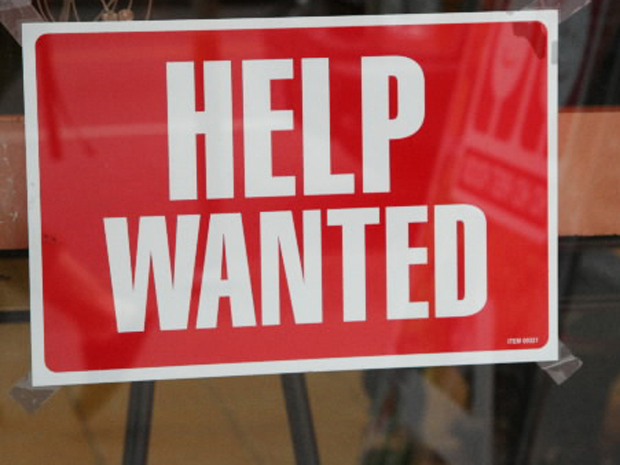282 Calgary Trail NW, Edmonton, Alberta
P: 780-439-7000
F: 866-293-5424
Saturday, August 6, 2011 - Province of 3.7M bests nation of 311M on jobs
By Gary Lamphier, edmontonjournal.com July 9, 2011

Just how awful was Friday's bleak U.S. jobs report? Let us count the ways:
Alberta created more new jobs in June (22,000) than all 50 U.S. states combined (18,000), even though the U.S. population is 85 times larger than Alberta's;
The shockingly weak U.S. jobs tally was more than 80 per cent below the consensus forecast, according to a Bloomberg poll of leading economists, and more than 50 per cent below even the most pessimistic projection;
If not for a sharp downward revision to the U.S. jobs numbers for May, the U.S. would have suffered an outright decline in employment for June;
The headline U.S. jobless rate (9.2 per cent) and the less widely used under-employment rate (16.2 per cent) are now at their highest levels in six months;
A total of 14.1 million Americans remained out of work in June, up from 13.9 million in May;
The 1.8 million new jobs created in the U.S. since the Great Recession ended is still 6.9 million below the staggering 8.7 million jobs lost during the downturn;
Even if U.S. job growth returns to the levels seen between February and April -when an average of 215,000 new jobs were created each month -it would take roughly three years to recover the jobs lost since 2008;
Of the 14.1 million Americans who are jobless, 6.3 million have been out of work for at least six months, an increase of 100,000 over the comparable May figure.
Public-sector payrolls shrank by another 39,000 workers in June -the eighth straight monthly decline -as cash-strapped U.S. federal agencies, state and municipal governments continued to slash their budgets;
Average U.S. hourly earnings and the length of the average work week also dipped in June, and the so-called participation rate (i.e., those who have jobs or are actively looking for work) sank to its lowest level in 27 years.
Friday's grim U.S. labour news, which came a day after a bullish private-sector payrolls report sparked a short-lived rally in stock markets, left some U.S. economists in a state of stunned disbelief.
"We are two years into a recovery and there is no improvement whatsoever," Paul Dales of Capital Economics told Bloomberg. "It is still as bad as it has ever been."
Chris Rupkey, chief financial economist at Bank of Tokyo-Mitsubishi in New York, was equally dire in his assessment. "This number (the 18,000 new jobs total for June) will really turn your hair grey, that's for sure.
The economy remains mired in its soft patch, which is looking more like a deep bog."
Even U.S. President Barack Obama, who is set to begin critical negotiations with the Republicans in a bid to avert a looming U.S. debt crisis, seems increasingly exasperated by the sluggish pace of recovery.
"(Friday's) jobs report confirms what most Americans already know, that we still have a long way to go and a lot of work to do to give people the security and the opportunity that they deserve," he says.
Here in the Great White North, the contrast with the latest U.S. jobs data couldn't be sharper. Canada added 28,400 more workers in June -the ninth straight monthly gain, and twice as high as the consensus estimate -bringing the first-half total to 192,000.
Ontario (40,000), Alberta (22,000) and Nova Scotia (3,800) led the gainers, while six provinces posted declines, led by Quebec (down 15,500). That kept the national unemployment rate steady at 7.4 per cent, even as Canada's labour force expanded by 42,000 workers.
Although three-quarters of the new jobs were in part-time, lower-paying positions and the annual pace of full-time wage growth moderated to two per cent, these are nitpicks.
Compared with the U.S., Canada has been a lean, mean, jobs-creating machine.
In Alberta, the picture is even brighter. With the 22,000 new jobs created in June -two-thirds of them in full-time positions -the provincial unemployment rate now stands at 5.6 per cent. That's the thirdlowest level in Canada, behind only Saskatchewan (at five per cent) and Manitoba (5.3 per cent). Although Alberta's jobless rate rose by 0.2 per cent from May, that mainly reflects a jump of 27,600 in the number of people looking for work.
And since many of those job seekers are recent arrivals from other provinces, that can only be bullish news for the provincial economy, driving demand for housing, rental accommodation and consumer goods and helping energy firms meet growing demand for workers.
In short, as the U.S. economy limps along, Alberta's economy appears to be gearing up for a new growth cycle.
Are there risks? Of course. Unless the U.S. can turn itself around -and soon -Canada's economy could hit another soft patch and oil prices could weaken again.
On the flip side of the coin, as China struggles to cap inflationary pressures, there are fears that its fastgrowing economy could be in for a hard landing. And that, in turn, could hammer the high oil prices that are the bedrock of Alberta's economy.
But so far, at least, these fears have not come to fruition. The bottom line?
The rest of the world would love to have Alberta's problems.
glamphier@edmontonjournal.com
© Copyright (c) The Edmonton Journal - quoted here: http://www.edmontonjournal.com/opinion/Province+bests+nation+311M+jobs/5077098/story.html?cid=megadrop_story
Archives
Categories



